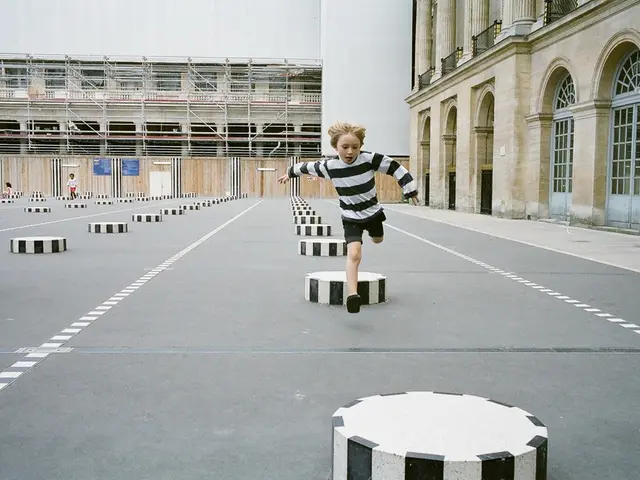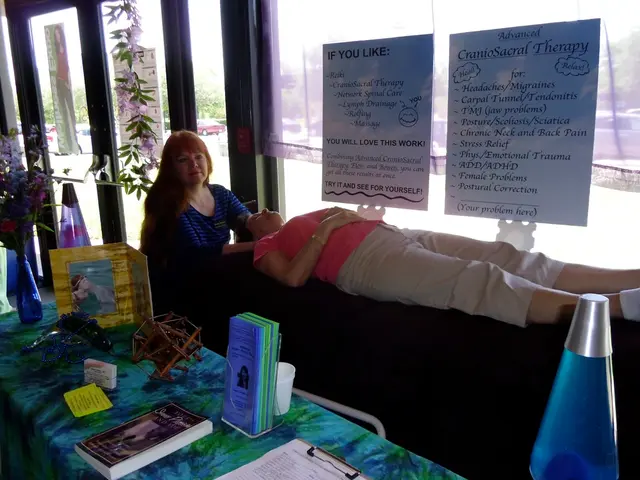Unseen Influences: Delving into the Subtle Forces of the Unconscious Brain
The subconscious mind, a mysterious and powerful force, profoundly impacts our daily lives, driving decisions, creativity, and emotions without our conscious awareness. This hidden influence shapes our behaviors, judgments, and intuitive responses, guiding us through life in ways we may not even realise.
At the heart of decision-making, the subconscious acts as the primary driver, often running on autopilot based on past experiences, habits, and emotional patterns. It can enable rapid, intuitive choices, but it can also be biased or limited by self-limiting beliefs, such as fear or imposter syndrome, restricting risk-taking and effective problem-solving. This emotional undercurrent influences cognitive processes, either enhancing or interfering with our executive functions and strategic thinking.
In terms of creativity, the subconscious mind fosters associative thinking, quietly connecting disparate ideas beyond focused, conscious reasoning. This allows for novel insights and innovative solutions to surface as "aha" moments or spontaneous inspiration.
To harness the power of the subconscious for improved emotional health and problem-solving, several methods have been proposed. Mindfulness and awareness practices, such as meditation, help increase awareness of thoughts and emotions without immediate reaction, creating mental space for conscious choice rather than unconscious reactivity. This reduces stress and enhances emotional regulation.
Addressing subconscious blocks, through cognitive-behavioral approaches or reflective practices, helps identify and reframe self-limiting subconscious beliefs, like fear of failure or negative money beliefs, which otherwise sabotage decisions and emotional well-being.
Deliberate habit change involves bringing conscious awareness to habitual responses and emotions, allowing individuals to interrupt automatic patterns and replace them with more adaptive behaviors, improving long-term emotional health and decision quality.
Engaging both cognitive systems, encouraging reflective System 2 thinking alongside trusting System 1 intuition, can balance analytical rigor and creative insight, allowing for more thoughtful choices without ignoring valuable subconscious input.
In summary, the subconscious mind influences decision-making and creativity by managing much of our behavior and intuition beneath conscious awareness, often shaping emotions and judgments that guide us. Training it through mindfulness, cognitive reframing, and habit awareness can improve emotional health and unlock better problem-solving and creative potential.
Key Insights:
- Decision-Making: Reframe limiting beliefs, mindfulness, cognitive strategies - Creativity: Cultivate open, mindful awareness - Emotional Health: Mindful observation and acceptance of feelings
This integration supports a more flexible, aware, and emotionally balanced approach to leadership, problem-solving, and innovation. Understanding the subconscious allows one to question its reactions, gaining power to reflect instead of just react. The subconscious mind operates just below conscious awareness, managing memories, emotions, beliefs, and learned behaviors. Allowing downtime or breaks from focused work can be a strategy to let the subconscious work without interruption.
The subconscious is a source of hidden genius, acting as a silent strategist, emotional compass, and creative muse. It can be influenced and reprogrammed through consistency and clarity. Nootropics or brain supplements can support mental clarity for effective subconscious influence. Changing subconscious beliefs about oneself is possible and can be accelerated with emotional processing and supportive tools.
Intuition, a form of rapid subconscious processing, draws on patterns stored over time to guide decisions. Paying attention to gut feelings, dreams, and pausing for reflection can help tap into the subconscious. The subconscious plays a significant role in decision-making, issuing quick verdicts based on stored experiences.
The goal is to retell the past in a way that empowers future actions. The subconscious can carry outdated or biased information, leading to snap judgments that may not be entirely fair or rational. Nootropics can help keep both conscious and subconscious minds in sync. Therapy, journaling, and mindfulness can help address buried emotions and update subconscious patterns.
Emotional memory and triggers can lead to overreactions to seemingly trivial events. The subconscious is constantly active, alerting you to important matters and nudging you towards trustworthy people. In psychology, this is known as the "incubation effect," where the subconscious continues processing a problem after conscious work has stopped. Old emotional wounds, beliefs, and fears often hide in the subconscious and can shape reactions and behaviors.
Repetition, visualization, affirmations, and mindfulness meditation are methods for subconscious reprogramming. The integration of conscious and subconscious minds leads to a more holistic, balanced, and empowered approach to life.
- The subconscious mind, a powerful force, often drives decision-making on autopilot based on past experiences, habits, and emotional patterns.
- Mindfulness and awareness practices, such as meditation, can increase awareness of thoughts and emotions, creating mental space for conscious choice.
- Cognitive-behavioral approaches and reflective practices help identify and reframe self-limiting subconscious beliefs that sabotage decisions and emotional well-being.
- Deliberate habit change involves bringing conscious awareness to habitual responses and emotions, allowing for the replacement of automatic patterns with more adaptive behaviors.
- The subconscious mind fosters associative thinking, connecting disparate ideas beyond focused, conscious reasoning, enabling novel insights and innovative solutions.
- Emotional memory and triggers can lead to overreactions to seemingly trivial events, requiring therapy, journaling, and mindfulness to address buried emotions and update subconscious patterns.
- Nootropics or brain supplements can support mental clarity for effective subconscious influence, while repetition, visualization, affirmations, and mindfulness meditation are methods for subconscious reprogramming.
- In psychology, the incubation effect refers to the subconscious continuing to process a problem after conscious work has stopped, providing potential solutions during sleep or quiet moments.
- Creativity can be cultivated by encouraging open, mindful awareness, allowing for the surfacing of novel insights and innovative solutions.
- Engaging both cognitive systems, reflective System 2 thinking alongside System 1 intuition, can lead to a balanced approach to problem-solving that incorporates valuable subconscious input.




